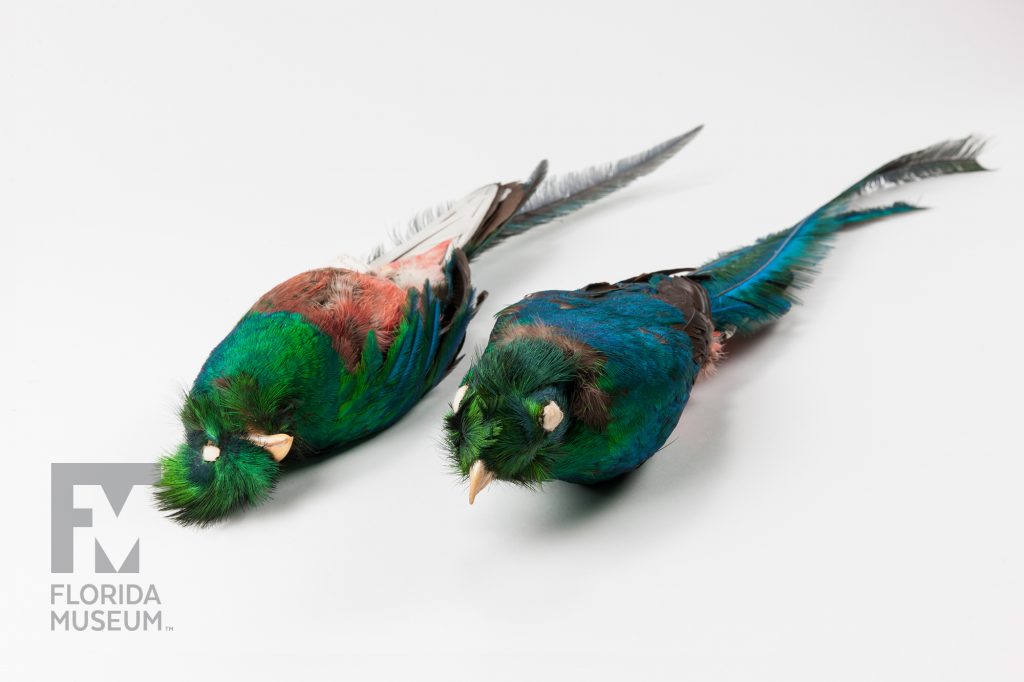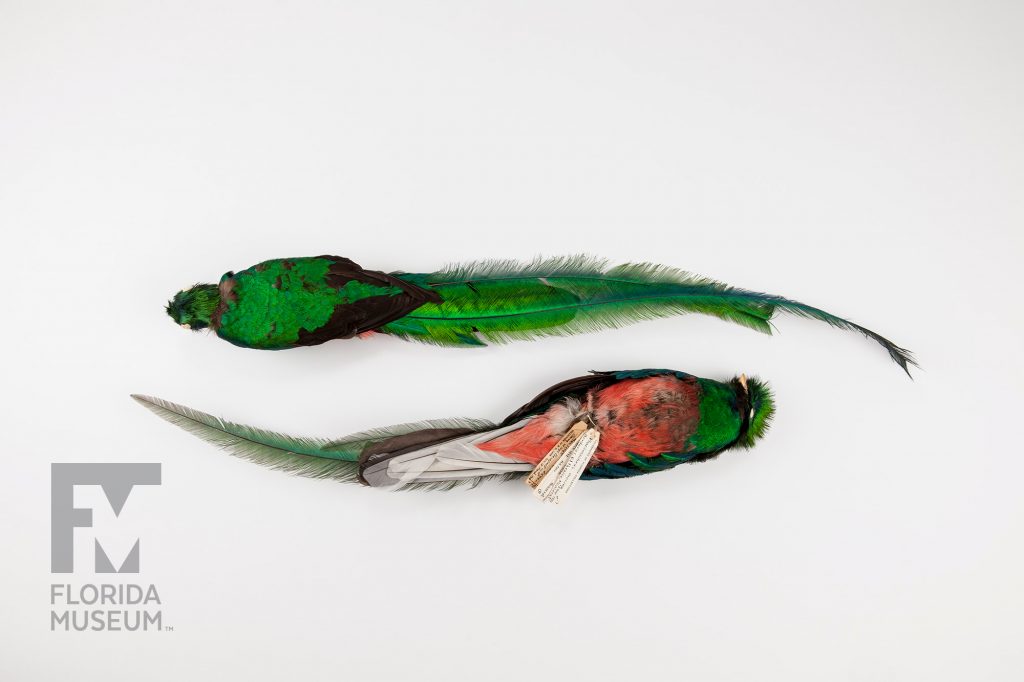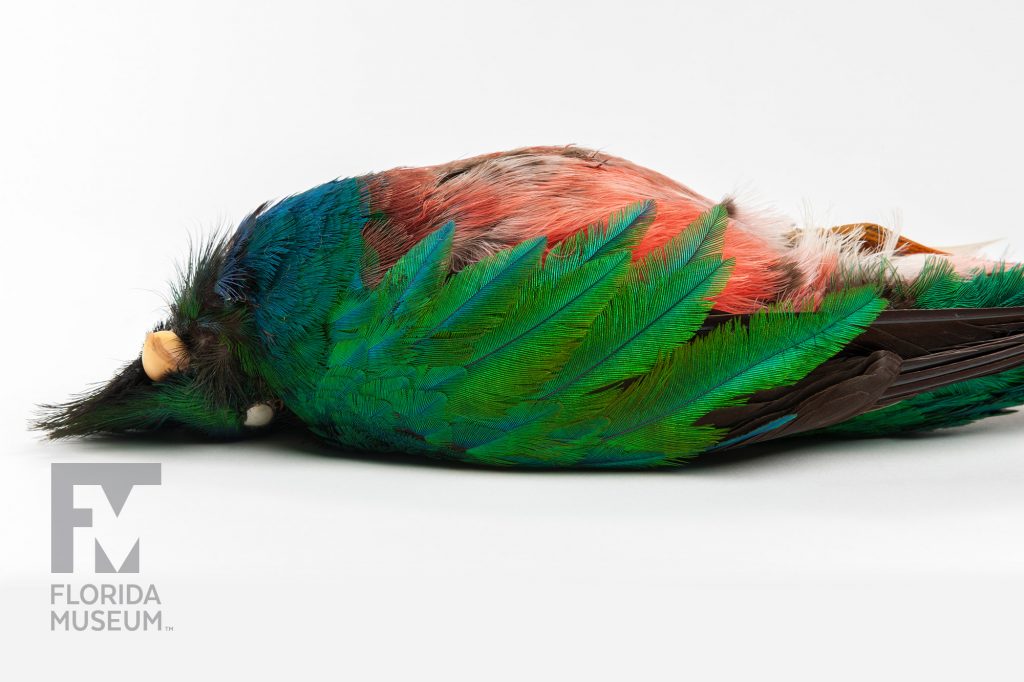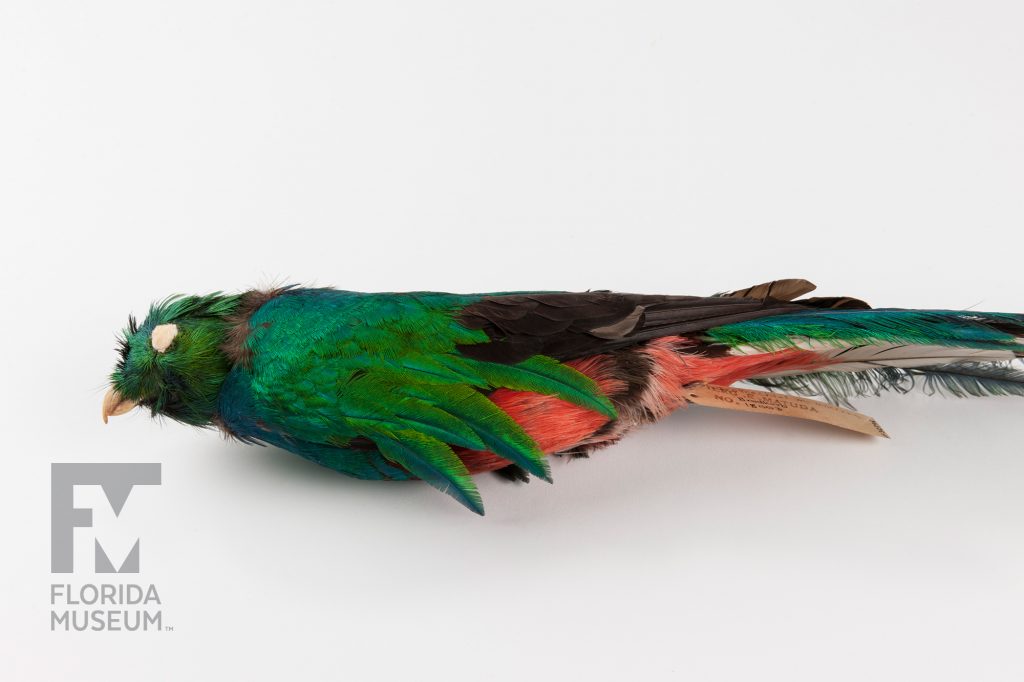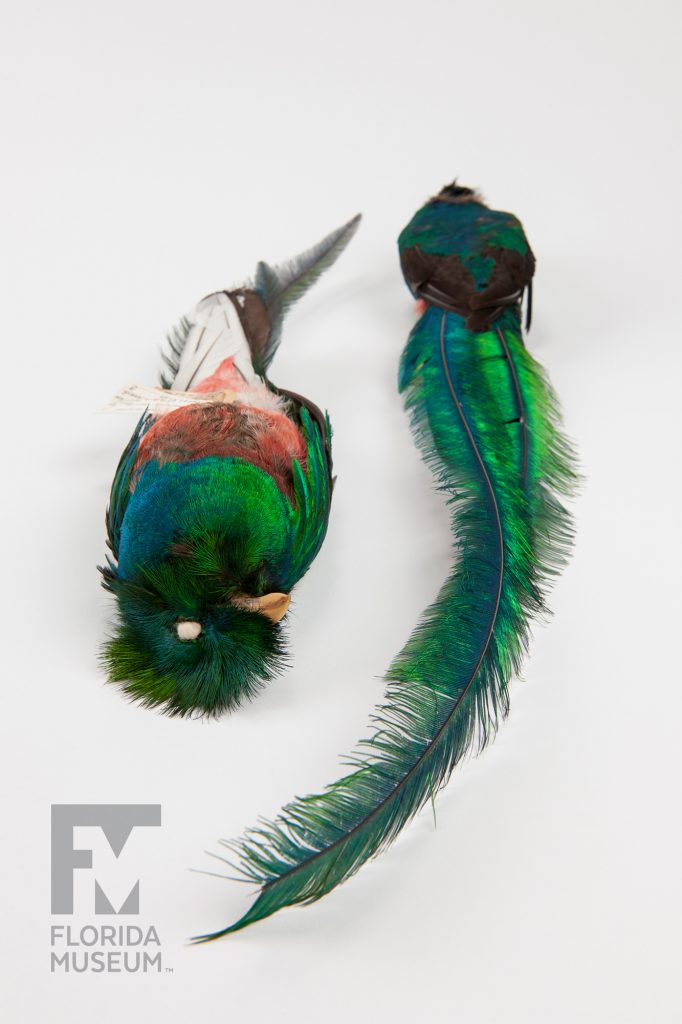Ancient Aztec and Maya regarded the Resplendent Quetzal’s bright feathers as objects of power, beauty and adornment. Quetzals are threatened by habitat loss, but many now live safely in protected cloud forests of Central America where they are beloved by bird watchers.
Summary
Resplendent Quetzal (Pharomachrus moccino)
From Chiapas, Mexico, 1968
Collection
Story
The Resplendent Quetzal is certainly one of the world’s most spectacular birds. The emerald-green shades that it has in its plumage, especially those long tail feathers, have impressed people for thousands of years. The Quetzal was important to the Aztec and the Maya. Today the Quetzal represents – maybe more than any other single bird, in the New World anyway, in the Americas – represents conservation of tropical forests.
The Resplendent Quetzal lives in cloud forests from southern Mexico to Panama, anywhere between about 4 to 7,000 feet elevation in these really moist, cloud-laden, very biologically rich forests. The Resplendent Quetzal needs these forests – it can’t live in a field, it can’t live in isolated trees, it can’t really tolerate much of a level of deforestation at all. So the Quetzal has become a flagship species for preserving cloud forests. In various places throughout its range, again from southern Mexico to Panama, where you have tracts of cloud forest that have been preserved mainly as national parks – some as private reserves – the Quetzal population is in fact thriving.
Especially for people from say, North America or Europe or something, to see a Quetzal in the cloud forest in these beautiful, very picturesque settings is quite the thrill of a lifetime. So we really admire the Quetzal for its sheer beauty as well as for its role – obviously not consciously – but for its role in conservation. The Quetzal is also important in these forests for dispersing fruits of trees, so the Quetzal actually helps keep the forest healthy.
David Steadman
Curator, Ornithology*
Florida Museum of Natural History
Exhibit
On display Sept. 23, 2017-Jan. 7, 2018, Rare, Beautiful & Fascinating: 100 Years @FloridaMuseum celebrated the Museum’s rich history. Each Museum collection was asked to contribute its most interesting items and share the stories that make them special. Though the physical exhibit is closed, this companion website remains online, providing an opportunity to experience the Florida Museum’s most treasured specimens.
Exhibit Area: On the Brink
Theme: Success Story
 Want to see more? Explore more than 300 breathtaking color photos of plants, animals, fossils and cultural heritage materials from the Florida Museum of Natural History’s collections in the award-winning book All Things Beautiful available from the University Press of Florida.
Want to see more? Explore more than 300 breathtaking color photos of plants, animals, fossils and cultural heritage materials from the Florida Museum of Natural History’s collections in the award-winning book All Things Beautiful available from the University Press of Florida.
*This title was accurate at the time the exhibit was on display in 2017. Please visit the collection website to verify current staff and student information.
